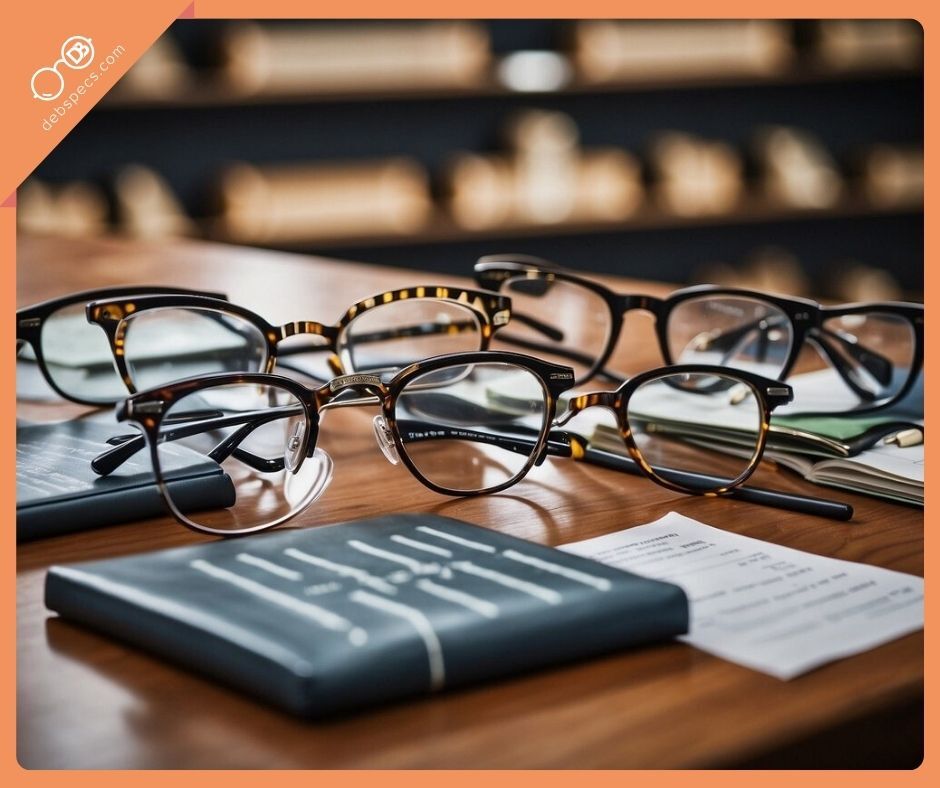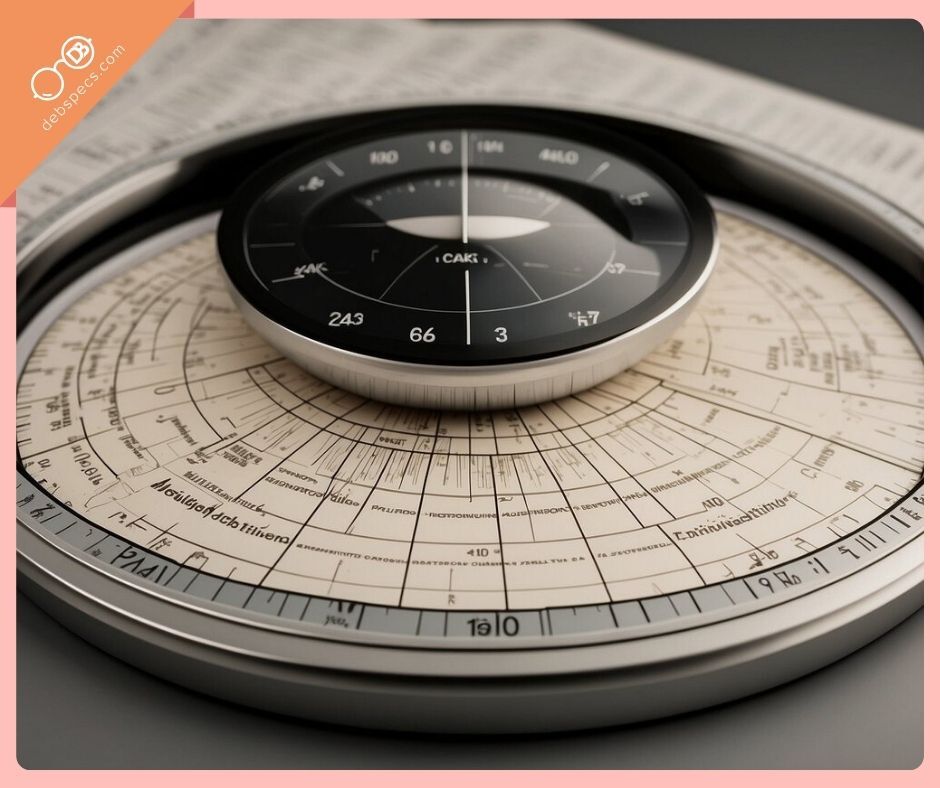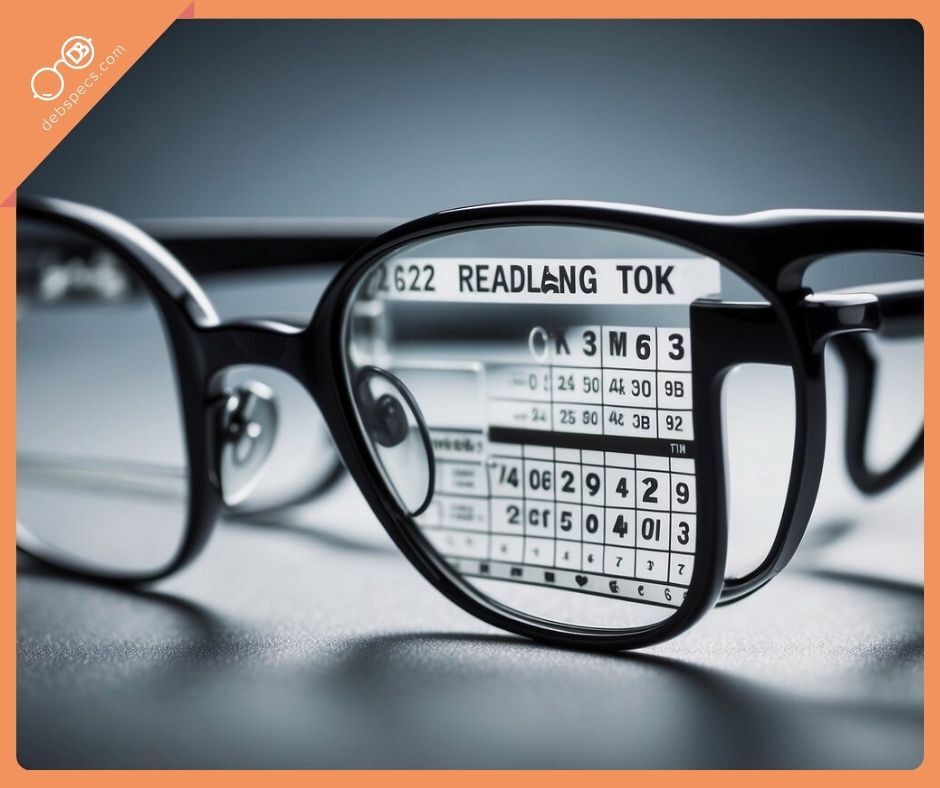
Reading Glasses Strength Chart: Find Your Perfect Diopter Easily
Posted by Team Debby on 9th May 2024
Finding the perfect pair of reading glasses isn’t just about style—it’s about seeing clearly and comfortably. If you’ve ever wondered what those little numbers like +1.25 or +2.00 really mean, or how to choose the right strength, this guide is for you.
We’ll walk through what diopters are, how age impacts your reading strength, and how to use a strength chart to pick glasses that sharpen your vision without straining your eyes.

What Reading Glasses Strength Means
Reading glasses strength is measured in diopters, indicated with a plus sign (+). Common strengths include +1.00, +1.25, +2.50, and so on.
- Lower numbers (+1.00 to +1.25): For mild blur when reading small text.
- Mid-range (+1.50 to +2.00): For moderate difficulty with close-up work.
- Higher numbers (+2.25 and up): For stronger magnification when reading becomes significantly challenging.
Think of it as zoom levels for your eyes—the higher the number, the more magnification you get.

Understanding How Strength Translates Into Everyday Clarity
As the article explains, finding the right diopter is really about matching your eyes to the distance where you read most comfortably. Readers with precise, consistent magnification can help bring text into sharper focus while reducing the strain that comes from guessing or using the wrong strength. The options below illustrate how these calibrated designs support clearer, more comfortable reading.
Why Strength Matters
Wearing glasses that are too weak means squinting and eye strain. Going too strong can cause headaches or distorted vision. The right strength gives you crisp clarity without overcompensation.
Understanding the Diopter Chart
A diopter chart is like a ruler for your vision. It uses text in different font sizes to help you figure out what strength you need.
Here’s how to use one:
- Stand about 14 inches from the chart.
- Read from top to bottom.
- Stop at the smallest line of text you can read clearly.
- Match that line to its corresponding strength.
Tip: You can print a diopter chart at home or test glasses in-store for a quick check.
Reading Glasses Strength by Age
Presbyopia—the natural loss of close-up focus—starts in your 40s and progresses with age. While everyone’s eyes are unique, here’s a handy starting-point chart:
|
Age Range |
Suggested Strength |
|
40–44 |
+1.00 to +1.25 |
|
45–49 |
+1.25 to +1.50 |
|
50–54 |
+1.50 to +1.75 |
|
55–59 |
+1.75 to +2.00 |
|
60–64 |
+2.00 to +2.25 |
|
65+ |
+2.25 to +2.50 |
Remember: This chart is a guideline. Your exact strength may differ depending on your eyes and daily activities.

How to Fine-Tune Your Choice
Beyond age and charts, consider these factors:
- Lighting: Better lighting reduces the need for stronger lenses.
- Tasks: You may want different pairs for reading books vs. computer use.
- Fit & Comfort: Glasses should feel good on your nose and ears.
- Lens Quality: Anti-reflective coatings can cut glare and eye fatigue.
If words still look blurry or you experience persistent strain, schedule a professional eye exam.

Myths vs. Facts About Reading Glasses
Myth: Stronger lenses are always better.
Fact: Too-strong glasses can actually make your vision worse by causing strain.
Myth: All readers are the same, so drugstore pairs are fine.
Fact: Quality, durability, and stylish fit vary—good readers should last and flatter your face.
Myth: Once you find your strength, it never changes.
Fact: Your eyes continue to evolve. Regular testing ensures your glasses keep up.
TL;DR (Quick Summary)
- Reading glasses strength is measured in diopters (like +1.50).
- Use an age-based chart or a printable diopter chart to find your starting point.
- Don’t go too strong—choose clarity without strain.
- Fit, lens quality, and comfort are just as important as magnification.
- Get your eyes checked every 1–2 years for the most accurate results.
FAQs About Reading Glasses Strength
Q: How do I know what strength I need?
Start with a printable diopter chart or try on readers, beginning at +1.00 and moving up until text looks sharp without effort.
Q: Does age always determine strength?
Not exactly—age gives a guideline, but individual vision varies. A 50-year-old may need +1.50, while another might need +2.00.
Q: What’s the difference between +1.25 and +1.50?
It may seem small, but that 0.25 step can be the difference between squinting and reading comfortably.
Q: Should I buy stronger glasses “just in case”?
No. Always choose the weakest strength that gives you clear vision. Overcorrection can cause discomfort.
Q: Is +2.00 the same as +200?
Yes—just a formatting difference. Both equal a diopter strength of +2.00.
Q: Can I test my reading strength at home?
Yes! Print a diopter chart, or simply try on different strengths while reading a book or magazine.
The DebSpecs Promise
At DebbySpecs, we believe readers should do more than sharpen your vision—they should complement your style. That’s why we offer fashionable, durable, and affordable frames that fit your life beautifully.
Because after 40, your style is timeless—even if your eyesight isn’t.

